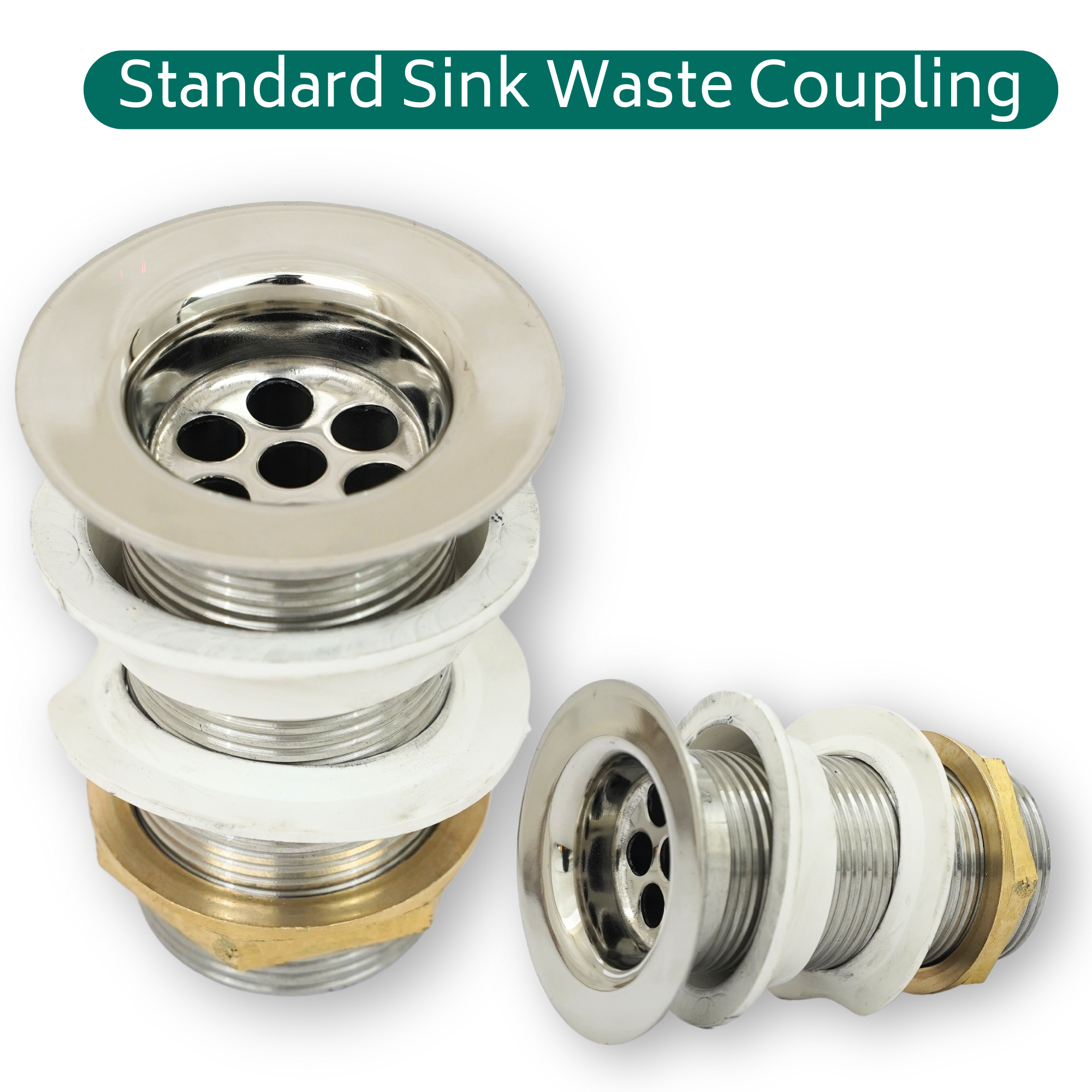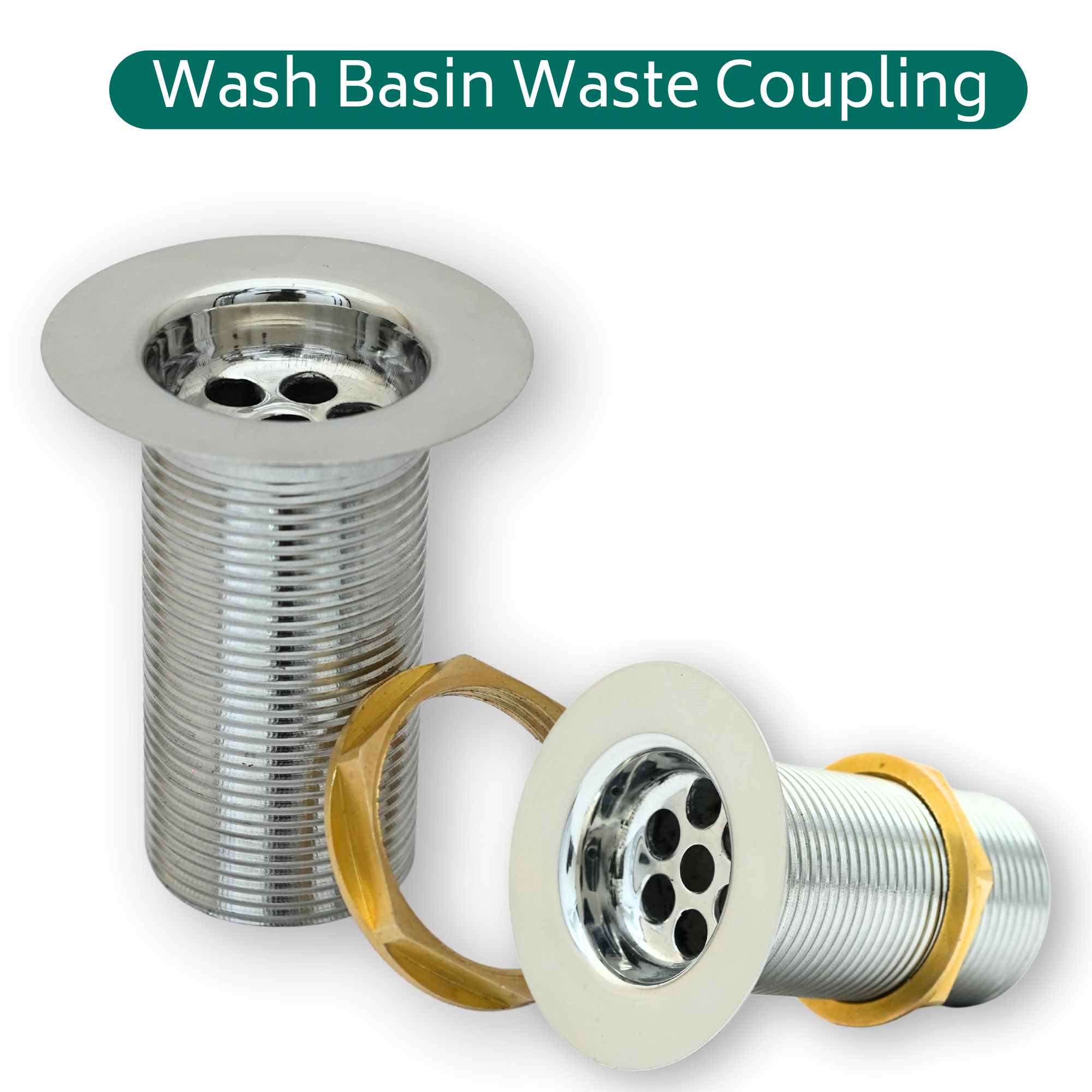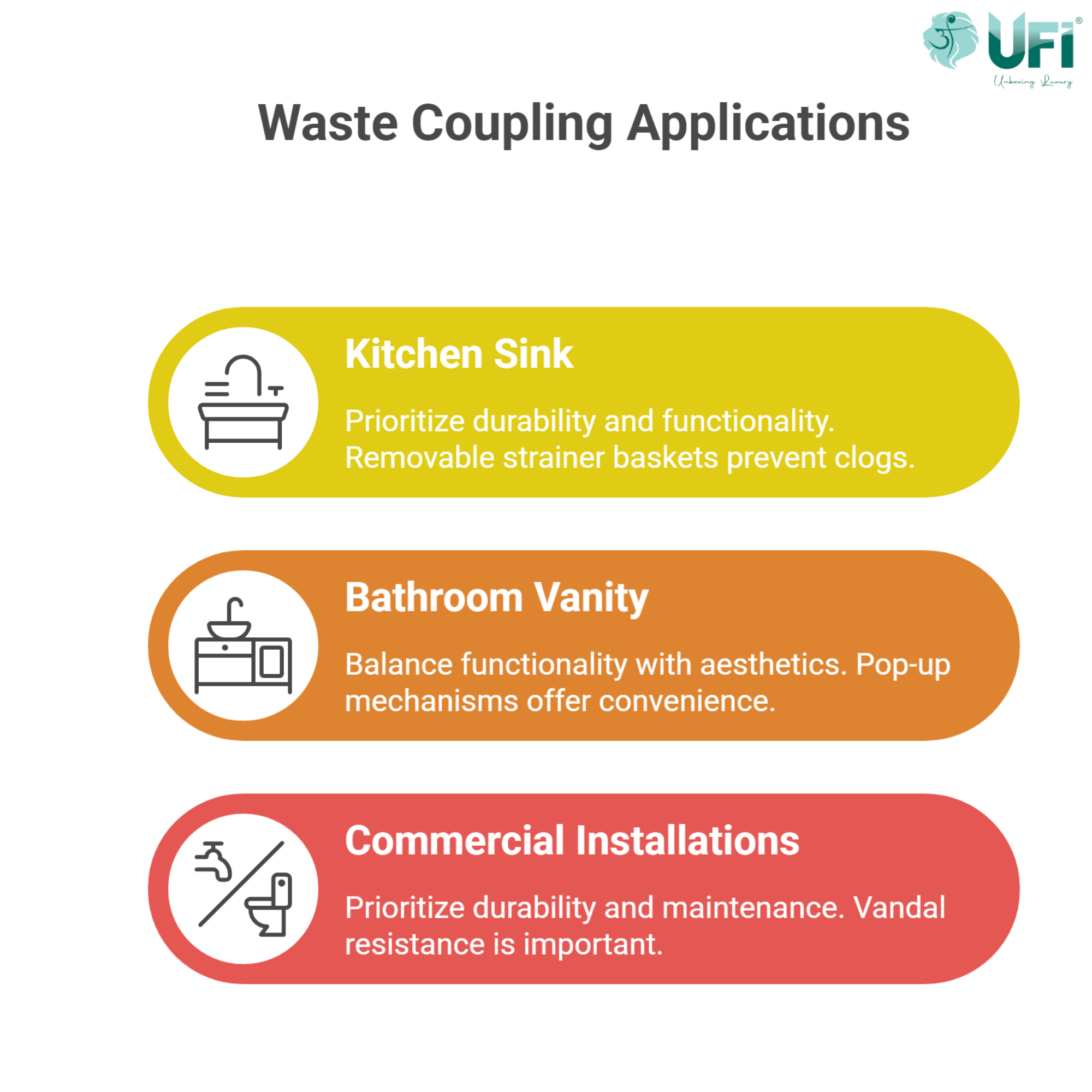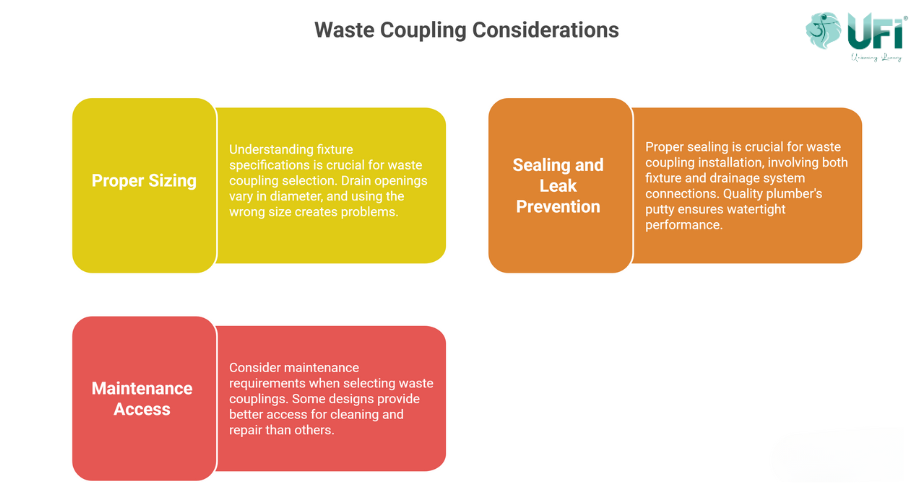waste coupling
If you've ever wondered what keeps your sink draining properly while preventing sewer gases from entering your home, you're looking at the humble yet crucial waste coupling. As someone who's spent years in the bathroom fittings industry, I can tell you that waste couplings are among the most underrated yet essential components of any plumbing system.
Most homeowners don't think about waste couplings until something goes wrong. But choosing the right waste coupling for your sink, wash basin, or kitchen can make the difference between smooth daily operations and frustrating drainage problems that cost time and money to fix.
Understanding Waste Couplings: The Foundation of Proper Drainage
A waste coupling is essentially the connection point between your fixture and the drainage system. It's the component that allows water to flow out while creating a seal that prevents sewer gases from coming back up through your pipes. Think of it as the gatekeeper of your drainage system.
The basic principle is simple, but the engineering behind it is quite sophisticated. Every waste coupling must maintain water flow, create an effective seal, and withstand daily use without failing. When you consider that a typical household sink gets used dozens of times per day, you start to appreciate why quality matters in these components.
Sink waste couplings serve multiple functions beyond just drainage. They maintain water seals, provide access points for cleaning, and in many cases, offer overflow protection. The design has evolved over decades to address common problems like clogs, leaks, and maintenance difficulties.
Types of Waste Couplings: Finding the Perfect Match for Your Fixture
Standard Sink Waste Coupling
The most common type you'll encounter is the standard sink waste coupling. These are designed for general-purpose sinks and come in various sizes to match different fixture configurations. The standard design includes a threaded connection that secures to the sink bottom and a tailpiece that connects to your home's drainage system.
What makes standard sink waste couplings reliable is their straightforward design. Fewer moving parts mean fewer potential failure points. However, they require manual removal of the drain plug for water retention, which some users find inconvenient.

Wash Basin Waste Coupling
Wash basin waste couplings are specifically engineered for bathroom sinks and vanities. These typically feature more refined aesthetics since they're visible in living spaces. The sizing is often different from kitchen applications, and the finish options are more extensive to match bathroom hardware.
Basin waste couplings often incorporate features like chain-and-plug assemblies or integrated stoppers. The materials used are usually more corrosion-resistant since bathroom environments can be more humid and chemically challenging due to cleaning products and personal care items.

Kitchen Sink Applications
Waste coupling for kitchen sink installations face unique challenges. Kitchen sinks handle grease, food particles, and hot water regularly. This means kitchen waste couplings need robust construction and materials that won't degrade under these conditions.
Waste coupling kitchen sink designs often include features like removable baskets or strainers to catch food debris before it enters the drainage system. Some models integrate with garbage disposal units, requiring special considerations for mounting and sealing.
Pop-Up Waste Coupling Systems
Pop up waste coupling mechanisms represent the premium end of the market. These systems allow users to open and close the drain with a lever or knob, typically mounted on the faucet or sink deck. The convenience factor is significant, but the complexity means more potential maintenance requirements.
The engineering behind pop-up systems is impressive. A series of linkages translates the motion from the control lever to the drain plug, all while maintaining watertight seals. Quality pop-up waste couplings can last decades with proper maintenance, but cheaper versions often fail within a few years.

Specialized Applications
Urinal waste coupling components serve commercial and residential urinal installations. These are designed for different flow patterns and maintenance requirements compared to sink applications. They often incorporate features like trap seals and access points for cleaning.
The construction of urinal waste couplings typically emphasizes durability and easy maintenance since these fixtures are often in high-use commercial environments. Materials are selected for chemical resistance and long-term performance.
Premium Brands: Quality That Makes a Difference
UFI-india Waste Coupling Excellence
UFI-India waste coupling products represent some of the finest engineering in the industry. Having worked with various brands over the years, I can tell you that UFI-India attention to detail and material quality sets them apart. Their waste couplings feature precision manufacturing and materials that resist corrosion and wear.
What impresses me about UFI-India's approach is their understanding that waste couplings need to perform reliably for years without attention. Their designs incorporate features that make installation easier and maintenance simpler. The finish quality on UFI-India products also tends to hold up better over time compared to cheaper alternatives.
UFI-India offers both standard and pop-up waste coupling options, with various finish choices to match their faucet and fixture lines. This coordination allows for cohesive design schemes that many contractors and designers appreciate.
Installation Considerations: Getting It Right the First Time
Proper Sizing and Fit
Waste coupling for sink selection starts with understanding your fixture's specifications. Drain openings vary in diameter, and using the wrong size waste coupling creates problems that are expensive to fix later. Standard sizes include 1.25-inch and 1.5-inch openings, but always verify before purchasing.
The depth of your sink and the available space below also influence waste coupling choice. Shallow sinks might require low-profile designs, while deeper installations can accommodate standard configurations.
Sealing and Leak Prevention
Proper sealing is crucial for any waste coupling for wash basin installation. This involves both the connection to the fixture and the connection to the drainage system. Using quality plumber's putty or appropriate sealants ensures watertight performance.
I've seen too many installations fail because someone skimped on sealing materials or rushed the installation process. Taking time to properly seat and seal waste couplings prevents callbacks and maintains customer satisfaction.
Maintenance Access
Consider maintenance requirements when selecting waste couplings. Some designs provide better access for cleaning and repair than others. Basin waste coupling installations in tight vanity spaces particularly benefit from designs that facilitate easy service.

Cost Considerations: Understanding Waste Coupling Price Factors
Material Quality Impact
Waste coupling price varies significantly based on materials and construction quality. Basic plastic units might cost a fraction of precision-engineered brass components, but the long-term value proposition is quite different.
Brass waste couplings typically offer superior durability and corrosion resistance, especially in challenging water conditions. The initial price premium often pays for itself through reduced maintenance and replacement costs.
Feature Complexity
Pop-up mechanisms, integrated overflows, and specialty finishes all influence pricing. While basic sink waste coupling units serve their primary function effectively, premium features provide convenience and aesthetic benefits that many customers value.
Brand Premium
Established brands like Jaquar command higher prices due to their reputation for quality and reliability. However, this premium often translates into better materials, more precise manufacturing, and superior customer support.
Selection Guide: Matching Waste Couplings to Applications
Residential Kitchen Recommendations
For kitchen applications, prioritize durability and functionality over aesthetics. Waste coupling kitchen sink installations benefit from robust construction and easy cleaning features. Removable strainer baskets help prevent clogs and simplify maintenance.
Consider the cabinet space available below the sink when selecting waste coupling configurations. Some designs require more clearance than others, particularly pop-up mechanisms with their associated linkages.
Bathroom Vanity Applications
Wash basin waste coupling selection should balance functionality with aesthetics. Since these components are often visible, finish quality and design coordination with other fixtures becomes important.
Pop-up mechanisms work particularly well in bathroom applications where convenience and appearance both matter. The investment in quality pop-up systems usually pays off in user satisfaction and long-term performance.
Commercial Considerations
Commercial installations often prioritize durability and maintenance ease over appearance. Urinal waste coupling and heavy-duty sink applications need components that can handle high usage levels and aggressive cleaning chemicals.
Vandal resistance might also factor into commercial waste coupling selection, particularly in public restroom applications where components face intentional abuse.

Maintenance and Troubleshooting: Keeping Systems Running Smoothly
Preventive Maintenance
Regular cleaning and inspection extend waste coupling life significantly. Simple steps like removing debris, checking seals, and lubricating moving parts prevent most common problems.
Pop up waste coupling systems particularly benefit from periodic attention to their mechanical components. Keeping linkages clean and properly adjusted ensures smooth operation and prevents premature wear.
Common Problems and Solutions
Slow drainage often indicates partial blockages in the waste coupling or associated piping. Before calling a plumber, try removing and cleaning the waste coupling components. Many drainage issues resolve with simple cleaning.
Leaks typically occur at connection points where seals have degraded or loosened. Identifying leak sources early prevents water damage and costly repairs.
When to Replace
Waste couplings generally last many years with proper maintenance, but certain signs indicate replacement time. Persistent leaks, damaged threads, or corroded components warrant replacement rather than repair attempts.
Upgrading to higher-quality waste couplings during renovation projects often makes sense, even when existing components still function. The improved performance and reliability justify the investment.
Future Trends and Innovations
Smart Integration
Some manufacturers are exploring smart features in waste coupling design, including sensors that monitor drainage flow and alert users to potential problems. While still emerging, these technologies could revolutionize maintenance approaches.
Sustainable Materials
Environmental consciousness is driving development of waste couplings from recycled and sustainable materials. These products maintain performance standards while reducing environmental impact.
Modular Designs
Modular waste coupling systems that allow component replacement without full system replacement are gaining popularity. This approach reduces waste and simplifies maintenance.
Making the Right Choice for Your Project
Whether you're renovating a single bathroom or outfitting a commercial building, understanding waste coupling options helps ensure successful outcomes. Consider your specific requirements, budget constraints, and long-term maintenance preferences when making selections.
Quality waste couplings from reputable manufacturers like Jaquar provide reliable performance and long-term value. While the initial investment might be higher, the reduced maintenance requirements and superior performance justify the cost difference.
Remember that waste couplings are long-term investments in your plumbing system's functionality. Choosing quality components from established manufacturers ensures years of trouble-free operation and maintains the value of your property investment.
Ready to upgrade your drainage systems with premium waste couplings?
For expert guidance on selecting the right waste coupling solutions for your project, contact our team:
Contact Us Today:
📞 Call: 99008 21733
💬 WhatsApp: https://wa.me/919900821733
Visit our Bengaluru office at 285, 67th Cross Rd, 5th Block, Rajajinagar for in-person consultation
